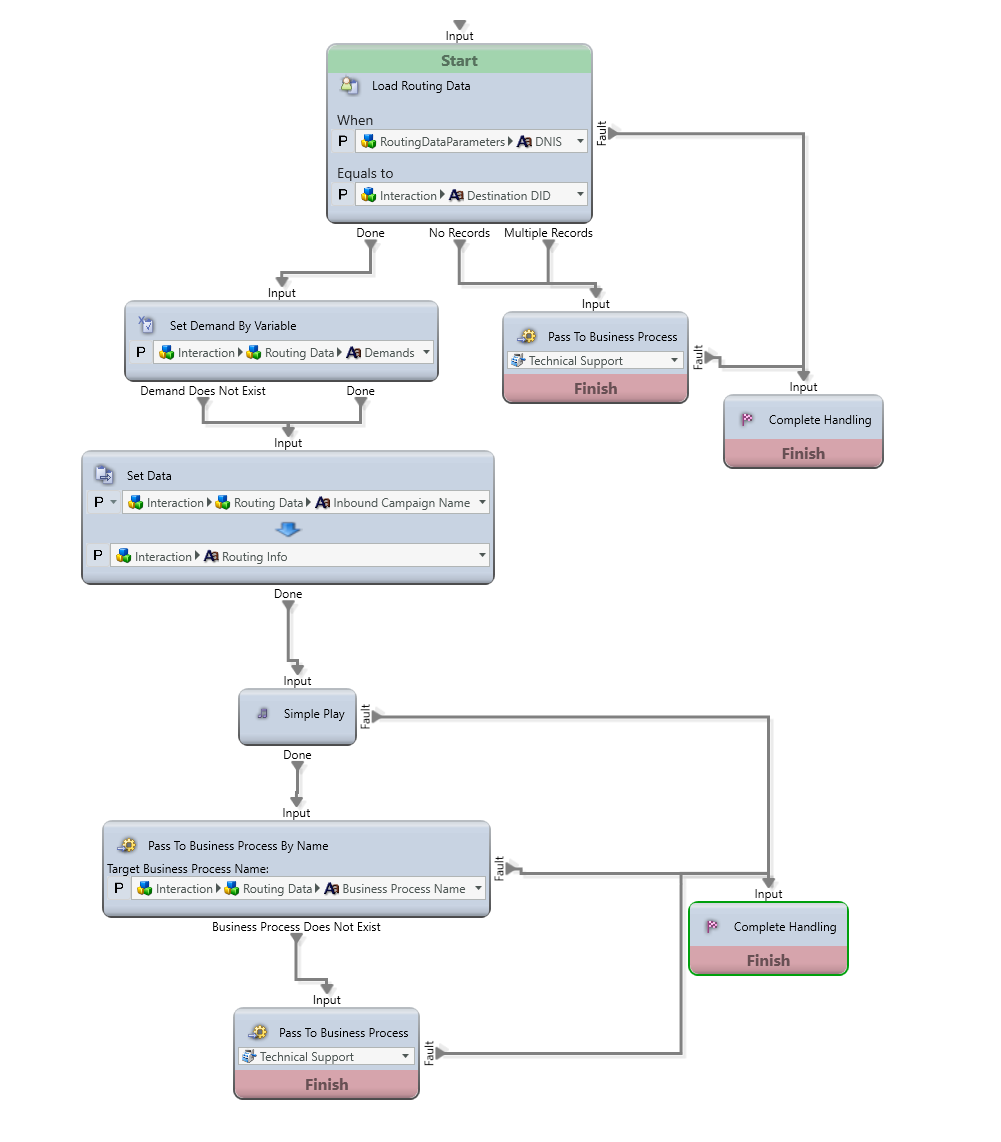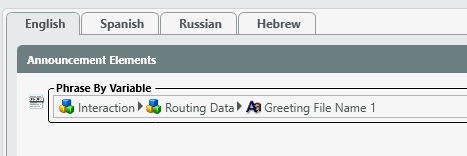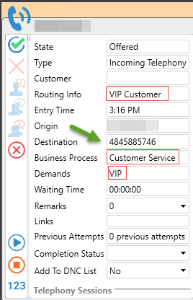The ECS Routing Data feature is designed to ease the management of sophisticated contact centers that need dynamic routing capabilities especially for those organizations with hundreds or thousands of inbound phone numbers. In many instances, these phone numbers are linked to various products, marketing campaigns, or clients which dictate the caller experience and agent requirements. For instance, a contact center may represent many different product brands or clients. Based upon the number dialed or other attributes, ECS needs to dynamically adjust each caller’s treatment such as:
The Routing Data capability provides customers with a wide range of data elements that can be used to dynamically control the call flow while simultaneously simplifying the actual programming / routing logic. Moreover, a field called “Routing Info” is available on the Agent client that allows the agent to better serve each interaction since they will have additional information at their fingertips such as the marketing campaign, source of lead, or the path that interaction followed to reach that agent.

To access this functionality, an ECS Administrator login is required.
Once logged in, the following options are available:
![]()
The Routing Data file contains many columns of data that can be used inside ECS Setup for routing purposes. The data elements have been assigned labels for the commonly used routing functions such as:
The field names are placeholders that make logical sense from a routing perspective. In reality, any field can be used for any purpose inside ECS Setup. All of the Routing Data elements become Interaction Properties inside the Interaction Handling Flow that are visible inside the Routing Data section.
![]()
NOTE: the Routing Data ID field MUST be populated with a unique value. We recommend that the file start with a Routing Data ID of 1 that increments for each row. Exported routing data can be sorted on the RoutingDataID column.
In this example, let’s assume we uploaded the following data elements into the Routing Data and all other fields were left empty.
| RoutingDataID | DNIS | BusinessProcessName | Demands | InboundCampaignName | GreetingFileName1 |
| 1 | 4845885746 | Customer Service | VIP | VIP Customer | EN_Greeting_VIP |
Let’s also assume that the following Interaction Handling Flow was created inside the Channel.

Inside the Simple Play activity
This Interaction Handling Flow will take the following steps based upon the Routing Data:
When an Agent receives this interaction, it will contain the following information.

The combination of the Routing Data with the Interaction Handling Flow creates a powerful tool to build endless routing possibilities based upon a very simple set of activities. For customers with many variations of similar interaction flows the Routing Data is an invaluable tool.